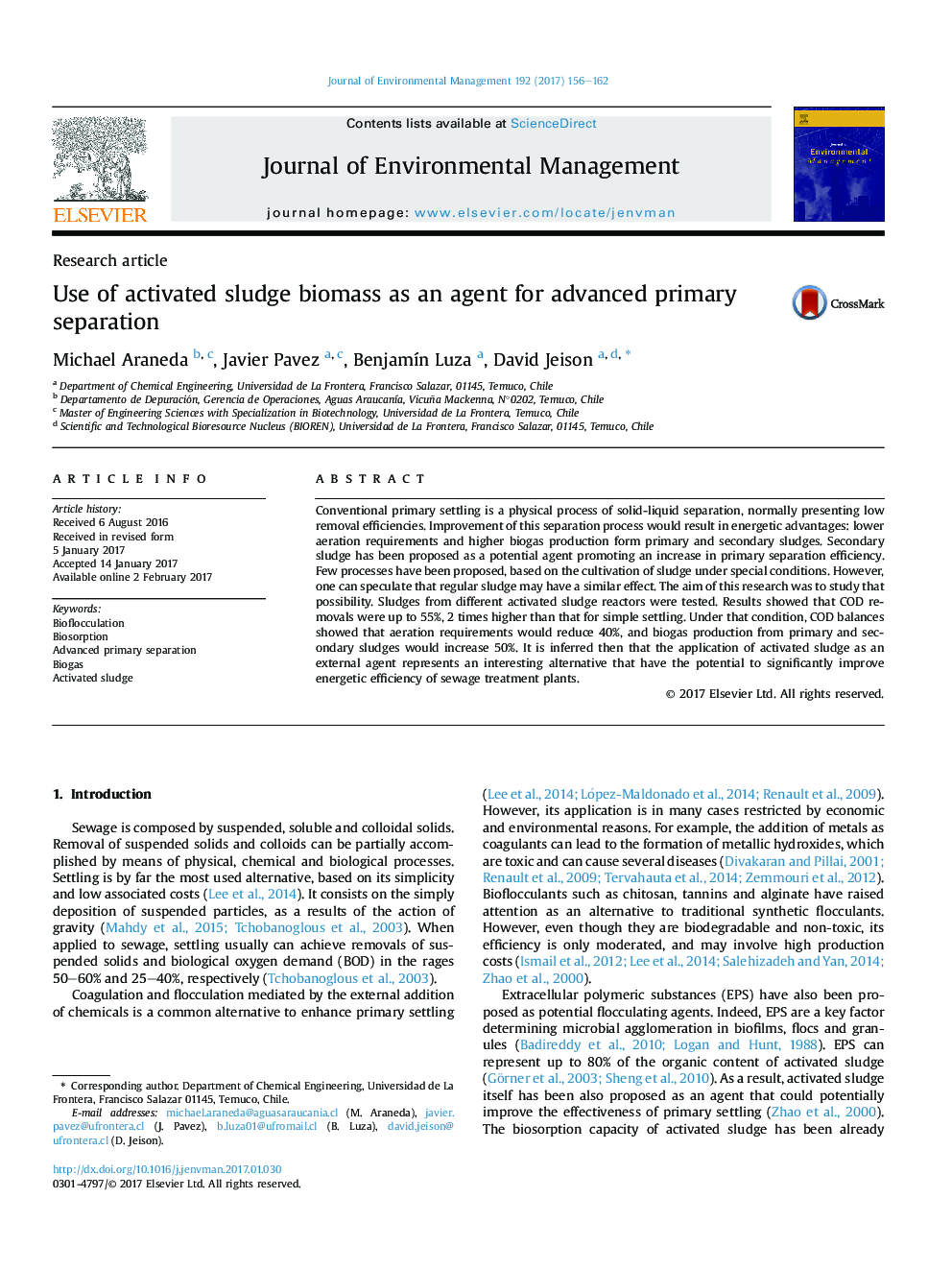| Article ID | Journal | Published Year | Pages | File Type |
|---|---|---|---|---|
| 5117039 | Journal of Environmental Management | 2017 | 7 Pages |
â¢Use of activated sludge as an external agent can improve primary separation.â¢Enhanced primary separation would improve energetic balance of sewage treatment.â¢Enhanced primary separation does not require the implementation of new bioreactors.
Conventional primary settling is a physical process of solid-liquid separation, normally presenting low removal efficiencies. Improvement of this separation process would result in energetic advantages: lower aeration requirements and higher biogas production form primary and secondary sludges. Secondary sludge has been proposed as a potential agent promoting an increase in primary separation efficiency. Few processes have been proposed, based on the cultivation of sludge under special conditions. However, one can speculate that regular sludge may have a similar effect. The aim of this research was to study that possibility. Sludges from different activated sludge reactors were tested. Results showed that COD removals were up to 55%, 2 times higher than that for simple settling. Under that condition, COD balances showed that aeration requirements would reduce 40%, and biogas production from primary and secondary sludges would increase 50%. It is inferred then that the application of activated sludge as an external agent represents an interesting alternative that have the potential to significantly improve energetic efficiency of sewage treatment plants.
Graphical abstractDownload high-res image (166KB)Download full-size image
